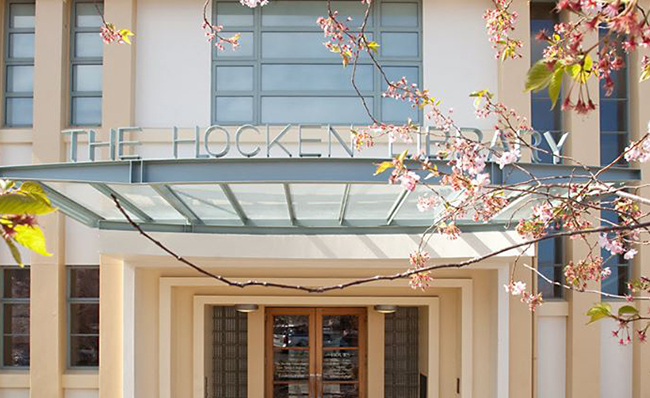
Hocken Collections staff are gearing up for the opening of their end-of-year exhibition, and they’ve prepared something special to see out 2020.
An exhibition commemorating the hundred-year anniversary of celebrated New Zealand artist Colin McCahon’s birth, ‘Colin McCahon: A Constant Flow of Light’ opens this Saturday and will run until 6 March 2021.
While McCahon was born in 1919, the Hocken staff had decided to run an exhibition this year, as some of its McCahon works had been loaned out to other institutions for 2019 anniversary exhibitions, and staff planned instead to work alongside the Dunedin Public Art Gallery to develop complementary 2020 McCahon exhibitions.
The University of Otago and Hocken Library are open during COVID-19 Alert Level 2 and physical distancing measures will be in place, hand sanitiser will be available, and the gallery space can accommodate up to 25 visitors at a time.
Anticipation of the exhibition has been building among art fans, and many are eagerly awaiting it, says Head Curator Robyn Notman.
“I think people really want to engage with art and creativity and inspiring spaces at the moment and so being able to curate an exhibition of McCahon’s art now has been very timely.
“It’s the kind of work that evokes many responses, feelings and readings and McCahon is an artist who stayed the course.”
The Hocken holds one of New Zealand’s most important and extensive collections of McCahon’s art, in addition to a wealth of archives relating to his life and work.
McCahon’s artistic foundations were forged in Ōtepoti Dunedin in the 1920s through to the 1940s, and support for him in the southern city remained steadfast.
Ms Notman says the Hocken’s McCahon collection is rich and soulful – it has a lot of integrity because the people who formed it, including Rodney Kennedy, Charles Brasch, Patricia France, Michael Hitchings, Gordon Brown and Tim Garrity, were directly connected to McCahon as friends, supporters, advocates, collectors and patrons.
McCahon also gave works to the Hocken’s collection and ensured his parents John and Ethel’s collection of his work was bequeathed there.
He did this out of regard for the Hocken as a place of culture and as a research collection with an on-going role to play nationally, and because of his connections to Dunedin and regard for the city as the place of his beginnings, she says.
Focusing on the period from the mid-1930s to mid-1970s, the upcoming exhibition includes iconic paintings which represent many of the artist’s key ideas, formal aesthetic innovations and influences.
More than 35 paintings will be on display, in addition to sketches and other works on paper and documents.
Visitors can expect to see some of the Hocken’s major McCahon works including well-known iconic early paintings such as ‘Dear Wee June’ (1948), ‘The Virgin and Child compared’ (1948), and ‘Chair’, (1939).
Also on show will be renowned works from the 1950s such as ‘The Wake’ (1958), and ‘Kauri Trees’ (1954), and significant major works from the 1970s including “Te Tangi o te Pipiwharua, The Song of the Shining Cuckoo” (1974).
There will also be one or two early period works on show from the Hocken collections that are lesser known and less reproduced and these might surprise some visitors.
Loaned works from the Govett-Brewster Art Gallery in New Plymouth, Te Manawa in Palmerston North, Christchurch Art Gallery Te Puna o Waiwhetū, Dame Jenny Gibbs, and the Dunedin Public Art Gallery will also be included.
Although he considered his work autobiographical, McCahon’s art has on-going resonance because it addresses universal themes of the human condition; rites of passage, love, loss, joy, hopes and fears, our relationship with ourselves and others, our land and our world, says Ms Notman.
“He put everything into his art and to inventing ways to express his ideas and concerns.
“He observes and questions and so his work is thought provoking and moving. You have to come to it with an open heart and an open mind.”
She has laid the exhibition out to form a conversation between the art works from different times in McCahon’s career, creating an elliptical, rather than linear connection and association between the paintings and their layout in gallery spaces.
“I like that you can see the artist developing his ideas and techniques and responding to where he is and what he is thinking about, and it’s fascinating to see him referencing and working with light and sight and depicting light, volume and space,” she says.
Due to the volume of works in the Hocken’s collection, some pieces will be set up on racks in the Hocken’s Pictures storeroom, which can be viewed by arrangement.







